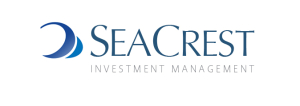Global markets started off the quarter slowly and then moved higher into early February declining back to the January lows in mid-March only to finish the quarter on a strong note. The S&P 500 Index rose 7.5% with the Dow Jones Industrial Average underperforming with a rise of barely 1%. The NASDAQ composite posted surprisingly strong performance with a rise of 17%. The MSCI All Country World Index rose 7.9% along with the Bloomberg U.S. Aggregate Bond Index which rose 2.9%. U.S. Treasury rates fell sharply although the yield curve continued to be inverted during the quarter. The ten-year treasury at 3.47% was 40 basis points lower at quarter-end versus the prior quarter while the two-year treasury at 4.03% also fell 40 basis points. Our view has not change, this level of inversion continues to bode poorly for the economy in 2023. The three-month U.S.T- bill at a yield of 4.75% is now 128 basis points higher than the 10-year U.S. Treasury note, historically a sign of a forthcoming recession. There is more market ‘talk’ of: Will this time be different?
The Federal Reserve continued to raise the Federal Funds rate during the quarter albeit they slowed from their 75-basis point pace (four during 2022) to 50 basis points and then 25 basis points at the last meeting. They also continued to reduce their bloated balance sheet monthly. What is on the minds of market participants is: Will the FOMC pause the Federal Funds rate after the May meeting? Will a weaker dollar and signs of both inflation (PCE or CPI?) and the economy cooling be enough to pause? And if so for how long if inflation does not slow quickly enough for the FOMC? As noted last quarter, we anticipate another 25 basis points in May and then a holding pattern. And as we have said ad nauseum in prior quarters: ‘Historically, in the face of rampantinflation, the FOMC continues to tighten until they ‘break something’, even if this results in a recession’. The question now is, was the collapse of two banks (largest since 2008) qualify as ‘breaking something’? Does the collapse of Credit Suisse also qualify? And repeating from last quarter: ‘A pause to their increasing rates in May could prove supportive for the markets if inflation has receded considerably’. Noting the substantive decline of interest rates this quarter, the ‘bond vigilantes’ have their opinions. However, an interest rate reversal (read reduction) this summer would most likely instill considerable volatility to the markets.
And politically speaking we still have the debt ceiling impasse heading towards a ‘go/no go’ dilemma in this or next quarter. This ‘conflict’ has a non-zero possibility of causing US Bond market turmoil.
As we stated in each quarterly review of 2022, market volatility will likely continue into 2023. We continue to be concerned about a global equity and fixed income market correction of even more substance than occurred in 2022. Valuations, particularly those that are both interest-rate sensitive and Technology related remain elevated. Comparative valuations to the 1999/2000 overvalued equity markets cannot be and should not be ignored. Intermittent ‘bear market’ rallies (of which we had several in 2022 and now one this quarter) of considerable magnitude and subsequent declines thereafter might well be the norm for the balance for 2023. While fixed income rates have declined this quarter, the interest rate spread between investment and non-investment grade securities still does not reflect realities in today’s inflation fueled and weakening economy. While the dollar has declined against world currencies this quarter it is still considerably higher than it was in just two years ago. And it may yet have more to fall.
And we repeat: The impact of the war in Ukraine still cannot be assimilated into the global economy with any degree of confidence. The human and economic tragedies are reminiscent of World War II. Moreover, profits at US multinational companies will continue to be negatively affected by a strong dollar, the war and the resultant slowing of economies in Europe. These horrors and the aftermath of the pandemic means caution in the global markets continues to be warranted, especially given the periodic emergence of new Covid variants.
Our continuing search for and investment in undervalued assets requires patience and a healthy dose of optimism for humanity.
